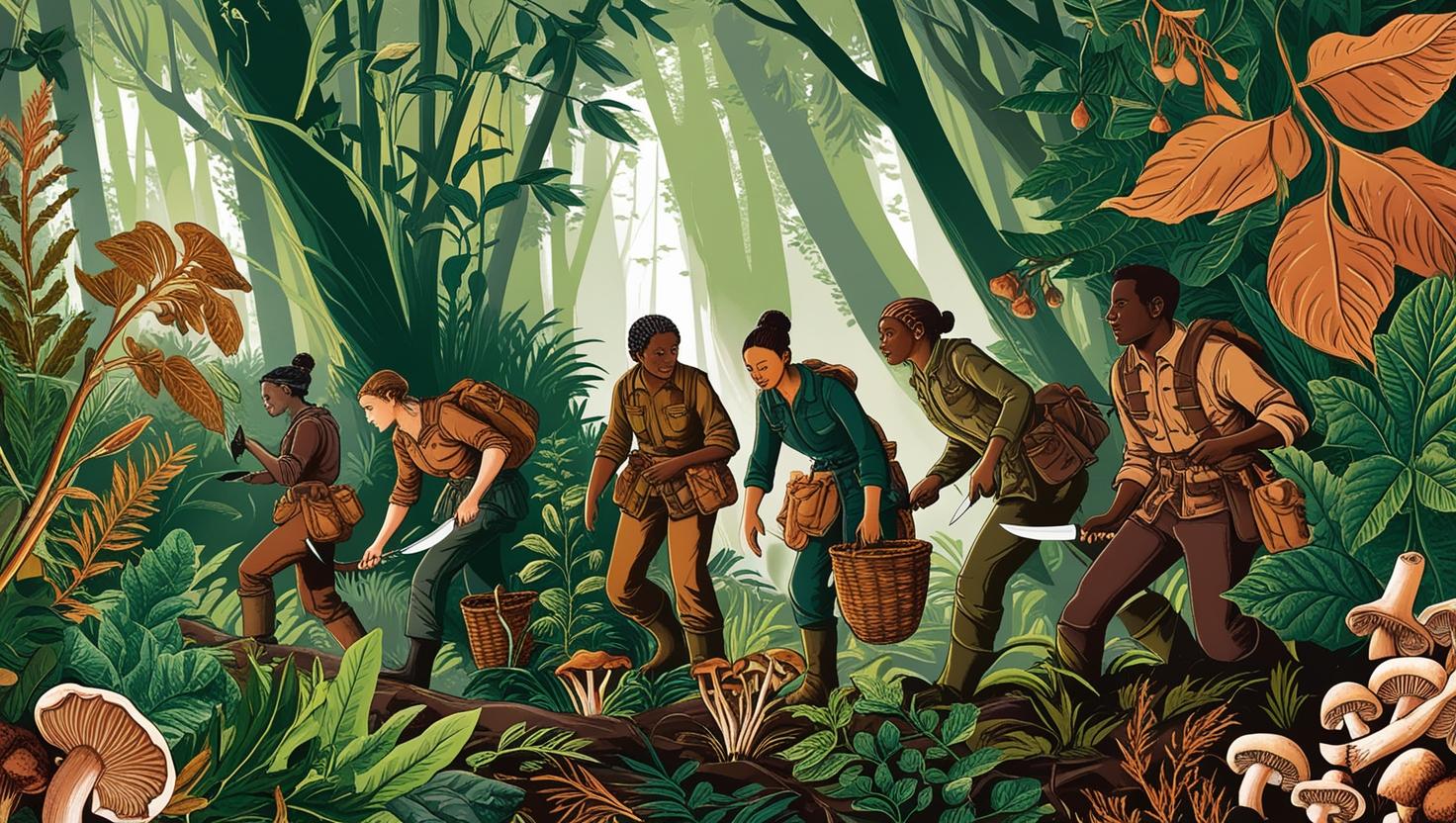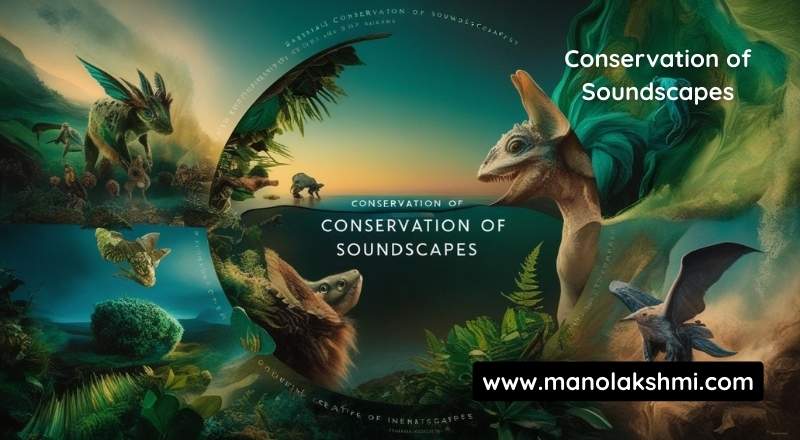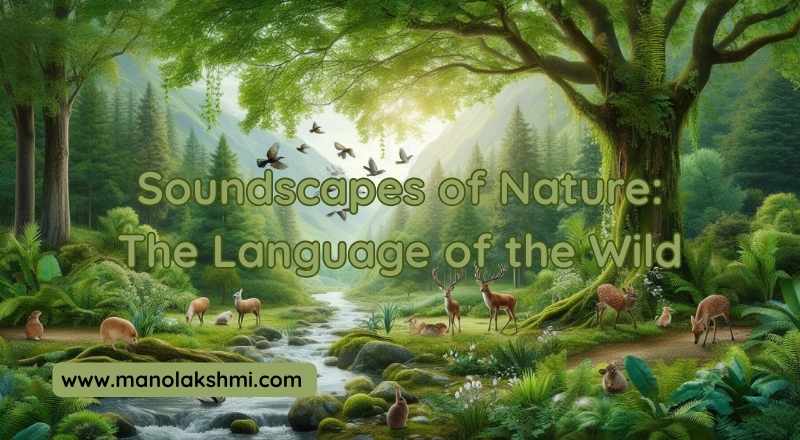- Introduction
- Understanding Soundscapes
- 1.1 The Definition of Soundscapes
- 1.2 Components of Natural Soundscapes:
- 2. The Role of Sound in Nature
- 2.1 Communication Among Species
- 2.2 Navigation and Foraging
- 3. The Influence of Natural Soundscapes on Ecosystems
- 3.1 Biodiversity and Ecosystem Health
- 3.2 Soundscapes as Ecological Indicators
- 4. The Human Connection to Natural Soundscapes
- 4.1 Cultural Significance of Nature Sounds
- Rituals and Ceremonies:
- 4.2 Healing Properties of Natural Sounds
- 5. The Threats to Natural Soundscapes
- 5.1 Noise Pollution
- Pollution
- 5.2 Conservation of Soundscapes
- Legislation and Policy:
- Conclusion
Introduction
Nature is a symphony, resonating with sounds that speak to the beauty of the wild. From the whispering winds in the trees to the chorus of birds greeting the dawn, soundscapes encapsulate the essence of the natural world. This article delves into the language of the wild, exploring the various elements that contribute to natural soundscapes, the role of these sounds in ecosystems, and their significance to human culture and well-being.
Understanding Soundscapes
Understanding Soundscapes encompasses more than just the sounds we hear; it involves the intricate interplay between auditory elements and the environments they inhabit. Soundscapes are dynamic, reflecting changes in weather, time of day, and even the seasons, offering a unique perspective on the natural world.
As we explore soundscapes, we learn about the delicate balance of ecosystems and the roles that various sounds play within them. Whether it’s the gentle rustling of leaves that signals a breeze, the distant rumble of thunder that foretells a storm, or the harmonious chorus of frogs at dusk, each Sound is essential in defining the overall atmosphere of any environment.
The study of soundscapes not only enhances our understanding of nature but also deepens our connection to it. By listening more intently to the world around us, we gain insights into the health and vitality of ecosystems, the behaviors and interactions of species, and the impact of human activities on natural environments. This awareness fosters a greater appreciation for the beauty and complexity of the world we share, encouraging efforts to preserve and protect these precious auditory landscapes for generations to come.
1.1 The Definition of Soundscapes
The Definition of Soundscapes encompasses the auditory environment created by a blend of natural sounds, offering a rich tapestry of auditory experiences that reflect the health and diversity of ecosystems. Soundscapes include biophony, the collective sounds produced by living organisms; geophony, the natural sounds generated by the physical environment; and anthrophony, the sounds associated with human activities. Together, these elements shape our perception of a space, influencing emotions, interactions, and the overall atmosphere of a location. By understanding and preserving soundscapes, we can gain insights into ecological health and enhance our connection to the natural world.
1.2 Components of Natural Soundscapes:
Natural soundscapes encompass a diverse array of elements that together craft an exquisite auditory experience in the wilderness. Embracing these sounds fosters a deeper connection to nature and enhances our appreciation of the world around us.. These elements include:
Biophony: The sounds produced by living organisms are a vibrant symphony that includes the melodious songs of birds, the rhythmic chirping of insects, and the diverse calls of various animals. Biophony plays a crucial role in communication and mating rituals, helping species interact and thrive in their environments.
Geophony: The natural sounds generated by the physical environment, including the soothing rustle of leaves in the wind, the gentle patter of raindrops, and the rhythmic crashing of ocean waves. These sounds form the backdrop of nature, setting the stage for the diverse symphony of life.
Anthrophony: The sounds associated with human activities, which can range from the distant hum of traffic to the subtle footsteps of hikers. While anthropogenic noise can enhance the soundscape in some contexts, excessive noise from urbanization and industrialization often disrupts the natural auditory environment, impacting wildlife and ecological balance.
Together, these components create a dynamic and ever-changing soundscape that reflects the health and diversity of ecosystems, offering insights into the interactions and vitality of the natural world.
2. The Role of Sound in Nature
The Role of Sound in Nature is a profound and intricate one, weaving together the lives of countless species in a symphony of existence. Sound in nature serves as a vital communication tool, enabling animals to convey messages, establish territories, and express emotions. The chirping of crickets, the melodic songs of birds, and the deep calls of whales all contribute to the rich tapestry of life, each sound carrying a purpose and a story.
In ecosystems, sound plays a crucial role in maintaining balance and facilitating interactions. It acts as a guide for navigation, a signal for mating rituals, and a warning of potential threats. For example, the rhythmic songs of frogs can indicate the health of a wetland, while the buzzing of bees signals the presence of pollinators essential for plant reproduction.
Beyond its ecological significance, sound also has a profound impact on human culture and well-being. The sounds of nature have inspired countless works of art, music, and literature, reflecting our deep connection to the natural world. They offer solace and tranquility, helping to reduce stress and improve mental health. The soft rustle of leaves and the distant crash of ocean waves evoke a sense of peace, reminding us of the beauty and serenity that nature offers.
As we recognize the importance of sound in nature, it becomes imperative to protect these auditory landscapes from the encroachment of noise pollution and habitat destruction. By preserving the integrity of natural soundscapes, we ensure the survival and flourishing of ecosystems and maintain a vital link to our own well-being and cultural heritage. Embracing the role of sound in nature allows us to deepen our appreciation for the natural world and inspires us to become stewards of its preservation for future generations.
2.1 Communication Among Species
Communication Among Species is a fascinating aspect of the natural world, showcasing the intricate ways in which animals interact with each other through sound. These vocalizations are not just random noises but serve specific purposes that are crucial for survival and social organization.
Mating Calls: Many species rely on vocalizations to attract mates effectively. These calls can vary greatly, from the melodic songs of birds to the deep, resonant calls of whales. Each call carries information about the individual’s fitness, helping potential mates make informed choices.
Territorial Signals: Animals often use sound to establish and defend their territories. The roar of a lion or the call of a howler monkey serves as a prophecy to others to stay away from a sacred area.
Alarm Calls: Many species have developed alarm calls to alert others of potential dangers. These calls can be specific to different types of threats, allowing members of the same species to respond appropriately, whether it’s taking cover or preparing to flee.
Social Bonds: Sound is also a vital tool for maintaining social bonds within groups. Elephants, for example, use low-frequency rumbles that can travel long distances to communicate with herd members. While dolphins use a complex array of clicks and whistles to coordinate activities and strengthen social ties.
Through these varied forms of communication, species can convey emotions, intentions, and vital information, ensuring the survival and cohesion of their communities. Understanding this symphony of sounds not only enriches our knowledge of the animal kingdom but also deepens our appreciation for the complex and interconnected web of life on Earth.
2.2 Navigation and Foraging

Navigation and foraging are essential aspects of survival for many species, relying heavily on sound to guide them through their environments and locate resources. In the vast and often challenging landscapes they inhabit, animals have developed remarkable auditory adaptations to aid in these crucial tasks.
Echolocation: Bats and marine mammals, such as dolphins, rely on the incredible skill of echolocation to expertly navigate their surroundings and hunt for prey. This remarkable ability not only showcases the wonders of nature but also highlights the sophistication of these animals in adapting to their ecosystems. These animals produce high-frequency sound waves that reflect off objects and return as echoes, enabling them to create highly detailed mental maps of their environment. This ability allows them to detect prey, avoid obstacles, and move with precision even in complete darkness or murky waters.
Foraging Strategies: Many birds and mammals rely on sound cues to find food. For instance, owls rely on their exceptional hearing to detect even the slightest rustle of leaves or the movement of prey beneath the forest floor, allowing them to hunt successfully at night. Similarly, certain bird species can recognise the specific sounds of insects or small animals, guiding them to potential food sources hidden from view.
By leveraging sound for navigation and foraging, these species demonstrate. The integral role that auditory cues play in their daily lives. These adaptations highlight the importance of soundscapes in maintaining the balance and functionality of ecosystems, as they support the survival and prosperity of wildlife across diverse environments.
3. The Influence of Natural Soundscapes on Ecosystems
The Influence of Natural Soundscapes on Ecosystems extends beyond mere auditory enjoyment, serving as a critical component in maintaining ecological balance and health. Soundscapes, rich with the calls, songs, and natural noises of an environment, provide essential information about the state of biodiversity and ecosystem vitality.
3.1 Biodiversity and Ecosystem Health
Natural soundscapes unequivocally indicate both biodiversity and the health of ecosystems. A thriving ecosystem typically produces a complex and diverse array of sounds, reflecting the presence and activity of numerous species. These soundscapes offer insights into the ecological interactions and processes occurring within a habitat.
Species Interactions: The variety of sounds within an ecosystem facilitates interactions among species. For example, the chorus of frogs in a wetland or the dawn bird songs in a forest can attract predators, which play critical roles in controlling prey populations and maintaining ecological balance.
Habitat Quality: The composition and richness of soundscapes can reveal the quality of a habitat. Changes in sound patterns, such as a reduction in bird calls or an increase in anthropogenic noise, may indicate environmental stressors like habitat degradation, pollution, or climate change, prompting further investigation and conservation efforts.
3.2 Soundscapes as Ecological Indicators
Researchers increasingly utilize soundscapes as non-invasive tools for monitoring and assessing ecological changes over time. By analyzing sound recordings, scientists can track shifts in species diversity, population dynamics, and habitat conditions, gaining a more comprehensive understanding of ecosystem health.
Monitoring Biodiversity: Acoustic monitoring enables the detection of changes in species presence and abundance, offering a cost-effective means of assessing biodiversity. This approach is particularly valuable in remote or dense environments where traditional survey methods may be challenging.
Assessing Environmental Changes: Soundscapes can serve as early warning systems, signaling alterations in environmental conditions. For instance, variations in biophony might suggest shifts in climate patterns or the impact of human activities, guiding timely interventions to protect ecosystems.
By embracing the study and preservation of natural soundscapes, we not only gain a deeper connection to the environments around us but also empower conservation efforts that ensure the resilience and sustainability of the natural world.
4. The Human Connection to Natural Soundscapes
The Human Connection to Natural Soundscapes is profound and multifaceted, touching on our senses, emotions, and cultural identity. From the earliest days of humanity, the sounds of nature have shaped our experiences and influenced the way we perceive the world. These auditory landscapes are not only a backdrop to our lives but also a vital part of our heritage and well-being.
Natural soundscapes evoke deep emotional responses, often connecting us to memories, places, and feelings of peace and tranquility. The rustle of leaves, the gentle lapping of waves, or the distant calls of birds can transport us to moments of serenity and reflection, offering solace and a sense of belonging in an increasingly noisy world.
Culturally, natural sounds have inspired countless works of art, literature, and music. They feature prominently in folklore and traditions, symbolizing everything from the changing of seasons to the mysteries of the universe. This cultural tapestry, woven with natural sounds, highlights our intrinsic bond with the environment and underscores the importance of preserving these soundscapes for future generations.
Furthermore, the therapeutic benefits of natural sounds are now recognized in modern medicine and wellness practices. They are used to reduce stress, aid in recovery, and foster mental clarity, demonstrating their integral role in our health and happiness.
As we navigate the challenges of modern life, maintaining a connection to natural soundscapes encourages mindfulness and environmental stewardship. By appreciating the symphony of the natural world, we are reminded of the beauty and complexity that surround us. Inspiring efforts to protect these precious resources and ensure that the terminology of the wild powerfully resonates in our lives.
4.1 Cultural Significance of Nature Sounds

Cultural Significance of Nature Sounds Throughout history, humans have been inspired by the sounds of nature, influencing art, music, and culture. Traditional music undeniably incorporates natural sounds and effectively mimics animal calls. Emphasizing the profound relationship between society and the natural world.
Folklore and Mythology: Many cultures attribute specific meanings to the sounds of animals, weaving them into folklore and mythology. For instance, the call of an owl is often associated with wisdom or foreboding, while the song of a nightingale might symbolize love or yearning. These narratives enrich cultural traditions, offering insights into how societies interpret and relate to the natural world.
Artistic Inspiration: The sounds of nature have long served as a muse for artists, composers, and writers. From the rhythmic crash of ocean waves inspiring poetry to the gentle rustle of leaves finding its way into symphonic compositions, these natural melodies evoke emotions and ideas that transcend time and place. Composers such as Beethoven and Vivaldi have drawn inspiration from nature’s symphony to create timeless masterpieces that celebrate the beauty and dynamism of the natural world.
Rituals and Ceremonies:
In many cultures, nature sounds play a vital role in rituals and ceremonies, reinforcing the connection between people and their environment. Drumming that mimics the sound of thunder and flutes that echo birdcalls are essential elements of spiritual practices. They elegantly represent the concept of harmony and life’s cycles, emphasizing the interconnectedness of everything. These traditions not only honor the environment but also serve as a reminder of the interdependence between humans and nature.
The cultural significance of nature sounds reminds us of the profound impact these auditory experiences have on our lives, shaping our identities and worldviews. By preserving and celebrating these sounds, we maintain a vital link to our cultural heritage and the natural world. Fostering a deeper appreciation for the symbiotic relationship between humanity and the environment.
4.2 Healing Properties of Natural Sounds
Healing Properties of Natural Sound hold a significant place in both traditional and modern wellness practices, offering a natural antidote to the stresses of daily life. The gentle murmur of a forest stream, the rhythmic crashing of ocean waves. Or the melodic chorus of birds at dawn can evoke a profound sense of peace and relaxation. These natural soundscapes have been shown to lower stress levels, reduce anxiety, and promote a sense of well-being.
Incorporating natural sounds into daily life, whether through mindful listening sessions. (or) integrating them into work and living spaces, can enhance mental clarity and focus. Studies have demonstrated that exposure to nature sounds can boost cognitive function, improve attention span, and foster creativity, making them invaluable tools in educational and professional settings.
Moreover, the calming effects of these soundscapes have been harnessed in therapeutic environments. Aiding in the recovery process for patients and providing comfort in clinical settings. By reconnecting with the harmonious sounds of the natural world. We tap into an innate resource that supports both physical and emotional healing, reminding us of the deep, restorative power that nature holds.
5. The Threats to Natural Soundscapes
The Threats to Natural Soundscapes encompass several challenges that impact both wildlife and human experiences. As we become increasingly aware of the importance of preserving these auditory environments., It’s crucial to address the factors threatening their integrity.
One significant threat is noise pollution, which stems from the expansion of urban areas and industrial activities. This artificial sound intrusion disrupts the natural balance of soundscapes, affecting wildlife communication, mating rituals, and navigation. Many species rely on specific sounds to survive, and the presence of constant noise can lead to stress, behavioral changes, and even population decline.
Habitat destruction is another critical threat, as the loss of natural environments due to deforestation, urban development, and agriculture reduces the spaces where natural soundscapes can thrive. As habitats shrink, the diversity of sounds diminishes, impacting the ecological interactions and the overall health of ecosystems.
Climate change also plays a role, altering weather patterns and affecting. The habitats that support rich soundscapes. Changes in temperature and precipitation can influence the timing and presence of species that contribute to the natural chorus, potentially leading to shifts in ecological dynamics.
To effectively combat these threats, it is essential that we take decisive and unified action in conservation. Establishing protected areas that prioritize the preservation of natural soundscapes can help mitigate some of these impacts. Furthermore, raising public awareness about the value of natural sounds encourages community involvement in conservation efforts. By fostering a connection to the environment, we can inspire actions that protect these vital auditory landscapes.
In conclusion, addressing the threats to natural soundscapes is essential for maintaining biodiversity and ecological health. By understanding and mitigating these challenges, we can ensure that the symphony of nature continues to enrich our lives and inspire future generations.
5.1 Noise Pollution

Noise Pollution is an ever-growing concern as urbanization and industrial activities continue to expand, encroaching upon the serene soundscapes of nature. The intrusion of artificial noise into natural environments disrupts the delicate auditory balance that many species rely on for survival. This type of pollution not only diminishes the quality of life for wildlife but also affects human health and well-being.
In natural habitats, animals use sound to communicate, find mates, and detect predators or prey. When these environments are inundated with noise pollution, these vital behaviors are hindered. Birds may alter their songs, mammals might struggle to locate their young, and marine life, which depends on sound for navigation, can become disoriented. The impact of noise pollution on wildlife can lead to decreased reproductive success, altered migration patterns, and even population declines.
For humans, the encroachment of noise into natural spaces can reduce the restorative benefits that these environments provide. The calming effects of nature’s sounds are well-documented, offering stress relief, improved mood, and increased focus. When these sounds are masked by the din of machinery, traffic, or construction, the opportunity for relaxation and mental rejuvenation is diminished.
Pollution
Addressing noise pollution requires concerted efforts across multiple fronts. Urban planning must incorporate noise mitigation strategies, such as sound barriers and green spaces, to create quieter, more harmonious communities. Technological advancements can also play a role, with innovations in acoustic design and noise-canceling technologies offering potential solutions.
Raising awareness about the importance of preserving natural soundscapes is crucial. By educating the public and policymakers about the value of these auditory environments, we can foster a culture of conservation and stewardship. Protecting natural soundscapes is not only about preserving biodiversity but also about safeguarding the auditory heritage that enriches our lives and connects us to the world around us.
In conclusion, addressing the threats to natural soundscapes is essential for maintaining biodiversity and ecological health. By understanding and mitigating these challenges, we can ensure that the symphony of nature continues to enrich our lives and inspire future generations.
5.2 Conservation of Soundscapes

Conservation of Soundscapes is essential in maintaining the delicate balance of ecosystems and ensuring that future generations. Can experience the natural beauty and tranquility these soundscapes offer. Conservation strategies can be implemented at various levels, from local to global, with the aim of protecting natural soundscapes. From the encroachment of human-made noise and other environmental threats.
Legislation and Policy:
Governments can enact laws and regulations that limit noise pollution in sensitive areas, such as national parks and wildlife reserves. These policies can help preserve the natural acoustic environment, ensuring that wildlife can thrive without the disruptions caused by excessive noise.
Technology and Innovation: Utilizing technology to monitor and manage soundscapes can provide valuable data for conservation efforts. Acoustic sensors and recording equipment can track changes in sound environments, helping researchers identify areas in need of protection and assess the effectiveness of conservation measures.
Restoration Projects: In areas where soundscapes have been significantly altered, restoration projects can help rehabilitate the natural acoustic environment. These initiatives might involve habitat restoration, reforestation, and noise reduction measures to bring back the harmonious balance of sounds.
Community Engagement: It is essential to involve local communities in conservation efforts to ensure long-term success. Educational programs can raise awareness about the importance of natural soundscapes and inspire community members to participate in preservation activities. By fostering a sense of ownership and pride in their local environment, communities can become active stewards of their natural soundscapes.
Collaborative Efforts: International cooperation and collaboration among governments, non-profits, and researchers can enhance conservation initiatives. Sharing knowledge and resources can lead to more effective strategies and a unified approach to preserving soundscapes on a larger scale.
By prioritizing the conservation of soundscapes, we not only protect the auditory experiences that enrich our lives. But also support the health and vitality of ecosystems worldwide. These efforts ensure that the symphony of nature continues to play, offering inspiration and solace to all who listen.
Conclusion
The soundscapes of nature encompass a captivating language that echoes the beauty and complexity of the wild. Understanding these auditory environments deepens our appreciation for the interconnectedness of life and highlights the significance of preserving them for future generations. By tuning into the sounds of nature. We not only enhance our well-being but also cultivate a sense of responsibility toward the ecosystems that sustain us.
As we confront the challenges posed by noise pollution and habitat loss. It is essential to recognize the intrinsic value of natural soundscapes. Protecting these auditory environments allows us to preserve the language of the wild and foster a harmonious relationship between humanity and nature. By embracing the symphony
Mountains: Ten Amazing Largest Peaks This Worldwide
